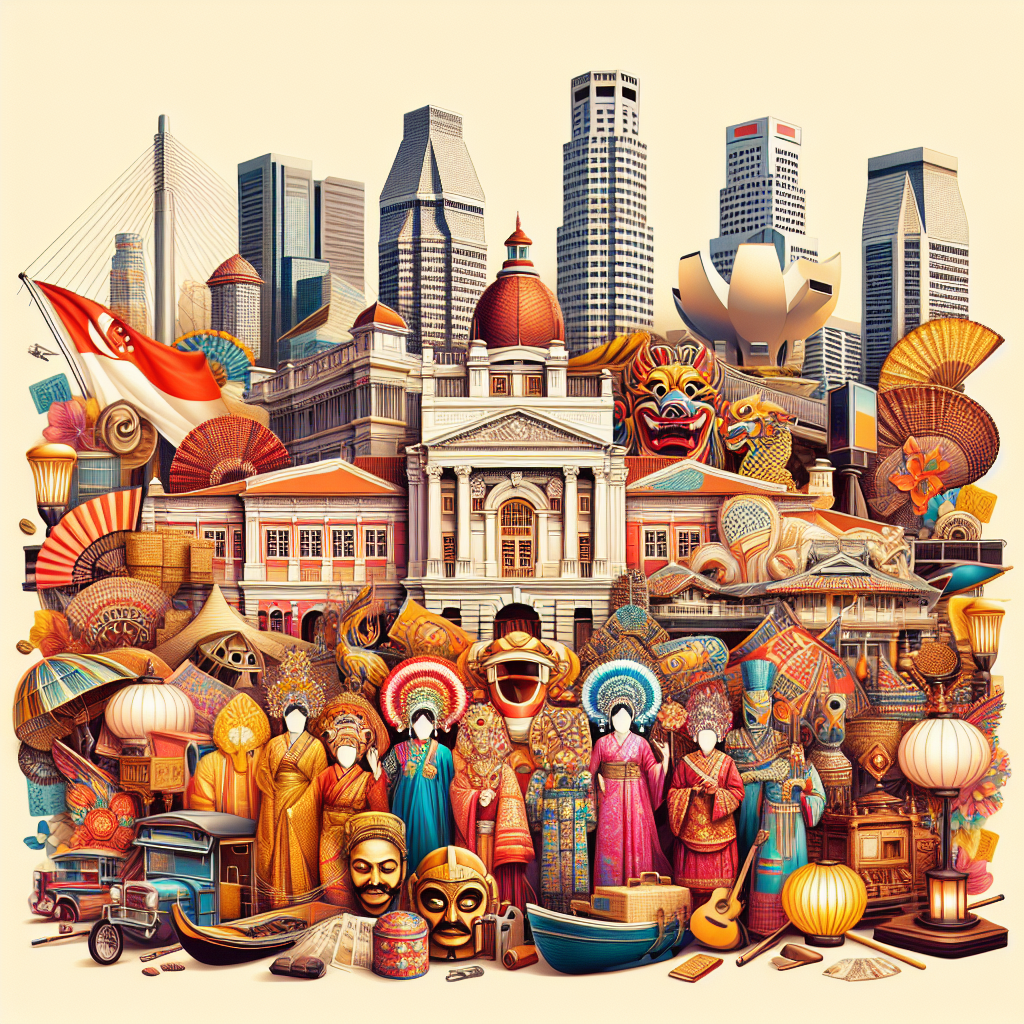Cultural Fusion: Discovering Singapore’s Rich Heritage and Traditions
Singapore, often described as the melting pot of Asia, is a vibrant metropolis where East meets West. As one of the most diverse nations in the world, Singapore is renowned for its harmonious blend of cultures, traditions, and languages. This fusion is evident in every facet of Singaporean life, from its bustling markets and varied cuisine to its festivals and architecture. In this article, we will explore the rich heritage and traditions that make Singapore a unique and captivating destination.
A Historical Overview
Singapore’s history is a tapestry woven from various threads, each representing a different culture and era. The island has been a significant port and trading hub for centuries, attracting merchants and settlers from China, India, the Malay Peninsula, and beyond. The arrival of the British in the early 19th century further diversified the population, adding European influences to the mix. Today, Singapore’s multicultural identity is a testament to its historical openness and inclusivity.
Ethnic Enclaves and Neighborhoods
One of the most striking features of Singapore is its ethnic enclaves, each with its distinct character and charm.
– Chinatown: A bustling neighborhood that offers a glimpse into the lives of Singapore’s Chinese community. Here, traditional shophouses stand alongside modern buildings, and the streets are filled with temples, markets, and restaurants. The Chinatown Heritage Centre provides an immersive experience into the history and culture of the Chinese settlers.
– Little India: A vibrant area that exudes the rich culture of Singapore’s Indian community. The streets are lined with colorful shops selling spices, fabrics, and jewelry. The Sri Veeramakaliamman Temple, one of the oldest Hindu temples in Singapore, is a must-visit.
– Kampong Glam: This historic district is the heart of the Malay-Muslim community. The stunning Sultan Mosque with its golden dome is the focal point of the area. Visitors can explore the Malay Heritage Centre to learn about the history and culture of the Malay people in Singapore.
Festivals and Traditions
Singapore’s calendar is filled with festivals, each reflecting the diverse cultural landscape of the island.
– Chinese New Year: Celebrated by the Chinese community, this festival marks the beginning of the lunar new year. It is characterized by lion dances, red lanterns, and sumptuous feasts.
– Deepavali: Also known as Diwali, this Hindu festival of lights is celebrated with great enthusiasm in Little India. Homes are decorated with oil lamps, and the streets come alive with colorful rangoli designs and fireworks.
– Hari Raya Puasa: This Muslim festival marks the end of Ramadan, the Islamic holy month of fasting. It is a time for family gatherings, feasting, and charity. The Geylang Serai bazaar is a highlight, with its array of food stalls and traditional crafts.
– Thaipusam: A Hindu festival observed by the Tamil community in Singapore. Devotees undertake a pilgrimage, carrying kavadis (ornate structures) as a form of penance and devotion.
Culinary Delights
Singapore’s food scene is a reflection of its multicultural society. The island is famous for its hawker centers, where one can find an array of dishes representing different cultures.
– Hainanese Chicken Rice: A dish of poached chicken and seasoned rice, served with chili sauce and cucumber garnishes. It is considered one of Singapore’s national dishes.
– Laksa: A spicy noodle soup with coconut milk, curry, and seafood or chicken. It is a staple in Peranakan cuisine, which blends Chinese and Malay influences.
– Roti Prata: An Indian flatbread usually served with curry. It can be enjoyed plain or with various fillings like egg, cheese, or onion.
– Satay: Skewered and grilled meat, typically served with peanut sauce, rice cakes, and a side of cucumber and onion. It is a popular Malay dish.
Modern Cultural Institutions
While Singapore cherishes its traditional heritage, it also embraces contemporary culture and innovation.
– National Gallery Singapore: Housed in the former Supreme Court and City Hall buildings, this gallery showcases Southeast Asian art from the 19th century to the present day.
– Esplanade – Theatres on the Bay: A performing arts center that hosts a range of events, from theater and dance to music and visual arts. It is affectionately known as “The Durian” due to its distinctive spiky architecture.
– Gardens by the Bay: A futuristic park featuring the iconic Supertree Grove, Cloud Forest, and Flower Dome. It is a symbol of Singapore’s commitment to sustainability and innovation.
FAQs
Q: What languages are spoken in Singapore?
A: Singapore has four official languages: English, Mandarin, Malay, and Tamil. English is the primary language of administration and is widely spoken, making it easy for tourists to communicate.
Q: What is the best time to visit Singapore?
A: Singapore has a tropical climate, so it is warm and humid year-round. The best time to visit is during the dry season, from February to April, when the weather is more pleasant.
Q: Is Singapore expensive to visit?
A: Singapore can be expensive, but there are options for all budgets. Hawker centers offer affordable dining, and there are many free or low-cost attractions like parks and cultural sites.
Q: What are some must-see attractions in Singapore?
A: Some must-see attractions include Marina Bay Sands, Gardens by the Bay, Sentosa Island, the Singapore Zoo, and the various ethnic enclaves like Chinatown and Little India.
Q: Is Singapore safe for tourists?
A: Yes, Singapore is known for its low crime rate and is considered one of the safest cities in the world for tourists. However, it’s always advisable to take standard precautions like keeping an eye on personal belongings.
In conclusion, Singapore is a fascinating destination where diverse cultures coexist harmoniously. Its rich heritage and traditions, combined with modern innovations, make it a unique place to explore and experience. Whether you’re a history buff, a foodie, or simply a curious traveler, Singapore offers something for everyone.
